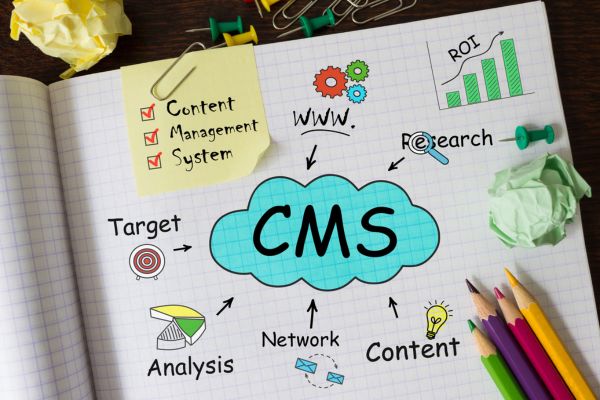In today’s rapidly evolving digital landscape, businesses are constantly seeking new ways to deliver content more efficiently across a wide range of platforms. From websites and mobile apps to digital kiosks and smart devices, the demand for flexible and scalable content management has never been greater. That’s where the concept of a headless CMS enters the picture. If you’ve ever wondered what this term means and how it impacts modern web development, this article offers a comprehensive breakdown of Headless CMS explained in clear and engaging terms.
Understanding the Traditional CMS Architecture
To fully appreciate what a headless CMS is, it’s essential to first understand what came before it. Traditional content management systems like WordPress, Joomla, or Drupal are known for bundling the front-end and back-end together. In simpler terms, these platforms combine the content database, administrative interface, and the presentation layer — the website or app — into one tightly coupled system.
While this architecture simplifies the process for managing content and designing pages, it also imposes limitations. Developers working with traditional CMS platforms often find themselves restricted by the platform’s built-in themes, templates, and plugin systems. This can hinder creativity, limit performance optimization, and create friction when trying to deliver content to non-web platforms.
What Is a Headless CMS?
When we talk about Headless CMS explained, the term “headless” refers to the removal of the “head” — the front-end presentation layer — from the CMS. A headless CMS focuses solely on the content repository and allows developers to deliver that content to any platform through APIs, typically RESTful or GraphQL.
This decoupling gives developers the freedom to build custom front ends using their preferred frameworks, whether it’s React, Vue.js, Angular, or even native mobile applications. The CMS, meanwhile, operates quietly in the background, managing and delivering content through a well-structured API.
How Headless CMS Transforms Content Delivery
One of the most compelling advantages of a headless CMS is its flexibility in content distribution. Because the content is stored separately from the presentation layer, it can be reused and repurposed across various platforms without duplication. Whether you’re running a website, a mobile app, or even a smartwatch interface, the same content can be delivered consistently through API calls.
This model also accelerates development workflows. Teams can work in parallel — content creators manage and organize information in the back-end system, while developers build out the user interface using modern frameworks. This not only streamlines collaboration but also shortens time to market for digital products.
Moreover, by allowing content to be served via API, a headless CMS facilitates faster loading times and improved performance, especially when paired with static site generators or edge delivery networks.
Ideal Use Cases for a Headless CMS
While a headless CMS may not be necessary for every project, it truly shines in scenarios where content needs to be distributed across multiple platforms. For example, an e-commerce business managing products, promotions, and blog content across a website, mobile app, and voice assistant would benefit significantly from a headless architecture.
Similarly, media companies that want to syndicate content to third-party platforms or marketers aiming for omnichannel campaigns find headless CMS solutions ideal for delivering consistent, branded experiences everywhere their users engage.
Key Benefits That Set It Apart
When considering Headless CMS explained, the advantages are clear. First and foremost is scalability. As your business grows and adds new digital touchpoints, a headless CMS allows you to integrate these seamlessly without restructuring your entire system.
Second, it enhances security by reducing the attack surface. Since the front-end and back-end are separate, potential vulnerabilities in the presentation layer do not compromise the content database directly.
Third, it empowers developers with greater flexibility. Freed from the constraints of a built-in front-end, developers can experiment with innovative user experiences and leverage the latest technologies without being held back by the limitations of a monolithic system.
Lastly, a headless CMS provides a more future-proof solution. As new platforms and devices emerge, businesses can adapt more quickly by simply connecting to the existing content infrastructure via APIs.
Challenges to Consider Before Adoption
Despite its many advantages, a headless CMS isn’t a silver bullet. It requires a more technical setup compared to traditional systems, making it less beginner-friendly. Organizations without in-house development teams might struggle with the initial implementation, especially when trying to build and maintain custom front-end applications.
Another consideration is the lack of built-in front-end templates, which means that time and resources must be allocated to build the presentation layer from scratch. For some businesses, especially smaller ones, this can present a barrier to entry.
However, many of these challenges can be mitigated with proper planning, and the long-term benefits often outweigh the upfront complexity.
The Rise of Hybrid CMS Solutions
As the popularity of headless architecture grows, many CMS providers are adopting a hybrid approach. This model offers the best of both worlds — allowing developers to access content via API while also providing optional front-end tools for less technical users. This flexible setup caters to both marketers and developers, bridging the gap between traditional and headless systems.
Platforms such as Contentful, Sanity, Strapi, and even WordPress (through its REST API) are examples of systems that support headless or hybrid implementations, giving users the freedom to choose the approach that best fits their needs.
Why Headless CMS Matters in 2025 and Beyond
In a world where user experience is everything, delivering fast, responsive, and personalized content has become a competitive necessity. Headless CMS solutions enable organizations to meet the demands of a multi-device, content-hungry audience with precision and control. As technology continues to evolve, businesses that embrace headless architecture will find themselves better positioned to adapt quickly, scale efficiently, and remain ahead of the curve.
Moreover, the demand for omnichannel content strategies — encompassing websites, apps, voice assistants, IoT, and more — is only expected to grow. A headless CMS makes such strategies not only feasible but also sustainable in the long term.
Conclusion: Embracing the Future of Content Management
When it comes to modern content delivery, traditional solutions no longer meet the diverse needs of digital-first organizations. With Headless CMS explained in clear terms, it’s evident that this approach represents a significant leap forward in content management technology. By decoupling the back-end from the front-end, businesses gain unprecedented flexibility, enhanced performance, and the ability to scale their digital presence with confidence.
Whether you’re building a single-page application, launching a mobile app, or orchestrating content across multiple platforms, a headless CMS can serve as the foundational layer that ties your entire digital strategy together. In the ever-evolving digital landscape, adaptability is key — and headless architecture delivers just that.



